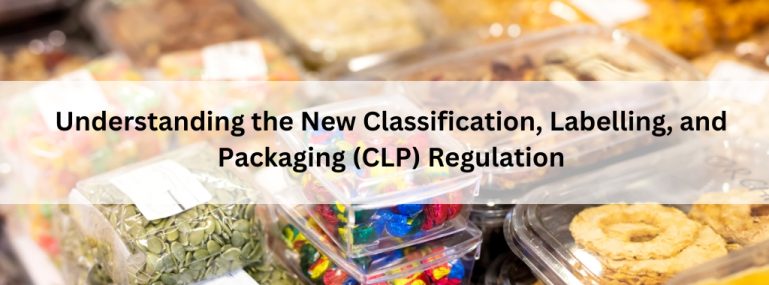Adapting to evolving regulations is crucial in the realm of chemical safety. The updated guidance on the new Classification, Labelling, and Packaging (CLP) Regulation provides clearer directives and enhanced details to improve chemical hazard communication across industries. This blog breaks down the key updates, their implications, and the steps businesses need to take to remain compliant.
What is the CLP Regulation?
The Classification, Labelling, and Packaging (CLP) Regulation aligns with the United Nations’ Globally Harmonized System (GHS) for hazard classification and communication. It aims to standardize the classification and labelling of chemicals, ensuring consistent safety information to protect human health and the environment.
Why Was This Guidance Revised?
Advancements in science and shifts in industry demands necessitate updates to existing regulations. The latest revisions aim to:
- Address emerging hazards.
- Simplify compliance procedures.
- Strengthen global harmonization of hazard communication.
Key Updates in the New Guidance
1.Introduction of New Hazard Classes
The updated CLP introduces new hazard classes to address previously unregulated risks, including:
- Endocrine disruptors (impacting human health and the environment).
- Persistent, Mobile, and Toxic (PMT) substances.
- Very Persistent and Very Mobile (vPvM) substances.
2.Updated Classification Criteria
Existing hazard classifications have been revised to minimize errors. Companies must reassess their chemical inventories to ensure compliance with the updated criteria.
3.New Labelling Requirements
Labels must now include new hazard statements and pictograms based on the updated classifications. These changes aim to enhance the clarity and visibility of safety information for users and handlers.
4.Digital Integration
The revised regulation encourages the use of digital tools, such as QR codes on packaging, to provide users with instant access to Safety Data Sheets (SDS) and supplementary hazard information.
5.Transitional Timelines
The updates include phased implementation schedules to allow businesses adequate time to adapt. Each change has specific compliance deadlines, such as those for classification and labelling updates.
Implications for Businesses
- Reclassification of Substances and Mixtures: Businesses must reclassify their products to align with the new hazard categories.
- Label Redesign: Labels must be updated to reflect the new requirements, ensuring end users receive accurate hazard information.
- Training and Awareness: Employees handling and distributing chemicals must be educated on the revised classifications and labelling protocols.
Impact on the Supply Chain
Companies must inform suppliers, partners, and customers about the required changes to ensure smooth implementation across the supply chain.
Steps to Maintain Compliance
- Study the Directive: Familiarize yourself with the revised CLP guidance in detail.
- Review Your Chemical Portfolio: Reevaluate all substances and mixtures against the updated classifications.
- Update Documentation: Ensure all SDS, labels, and other safety documentation comply with the latest standards.
- Seek Expert Advice: Consult regulatory compliance specialists to streamline the implementation process.
- Plan for Transition: Utilize the transitional periods to phase in updates systematically and avoid disruptions.
The updated CLP Regulation represents a significant milestone in improving chemical safety and environmental protection, but achieving compliance can be challenging for businesses navigating the complexities of reclassification, labelling updates, and supply chain adjustments.
At ComplianceXL, we specialize in simplifying regulatory compliance. From assessing your chemical portfolio to updating SDS and labels, training your teams, and ensuring seamless supply chain communication, our expert services are designed to help your business adapt efficiently to the new CLP requirements. Partner with us to stay ahead of regulatory changes, demonstrate your commitment to safety, and maintain uninterrupted operations. Let ComplianceXL be your trusted ally in achieving compliance with confidence.
FAQs:
1.What is the purpose of the CLP Regulation?
The CLP Regulation harmonizes the classification, labelling, and packaging of chemical substances to promote their safe use, transport, and disposal while aligning with GHS for global hazard communication consistency.
2.Who must comply with the revised CLP Regulation?
The regulation applies to EU/EEA manufacturers, importers, distributors, and chemical users. Companies exporting chemicals to these regions must also comply.





